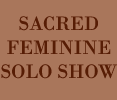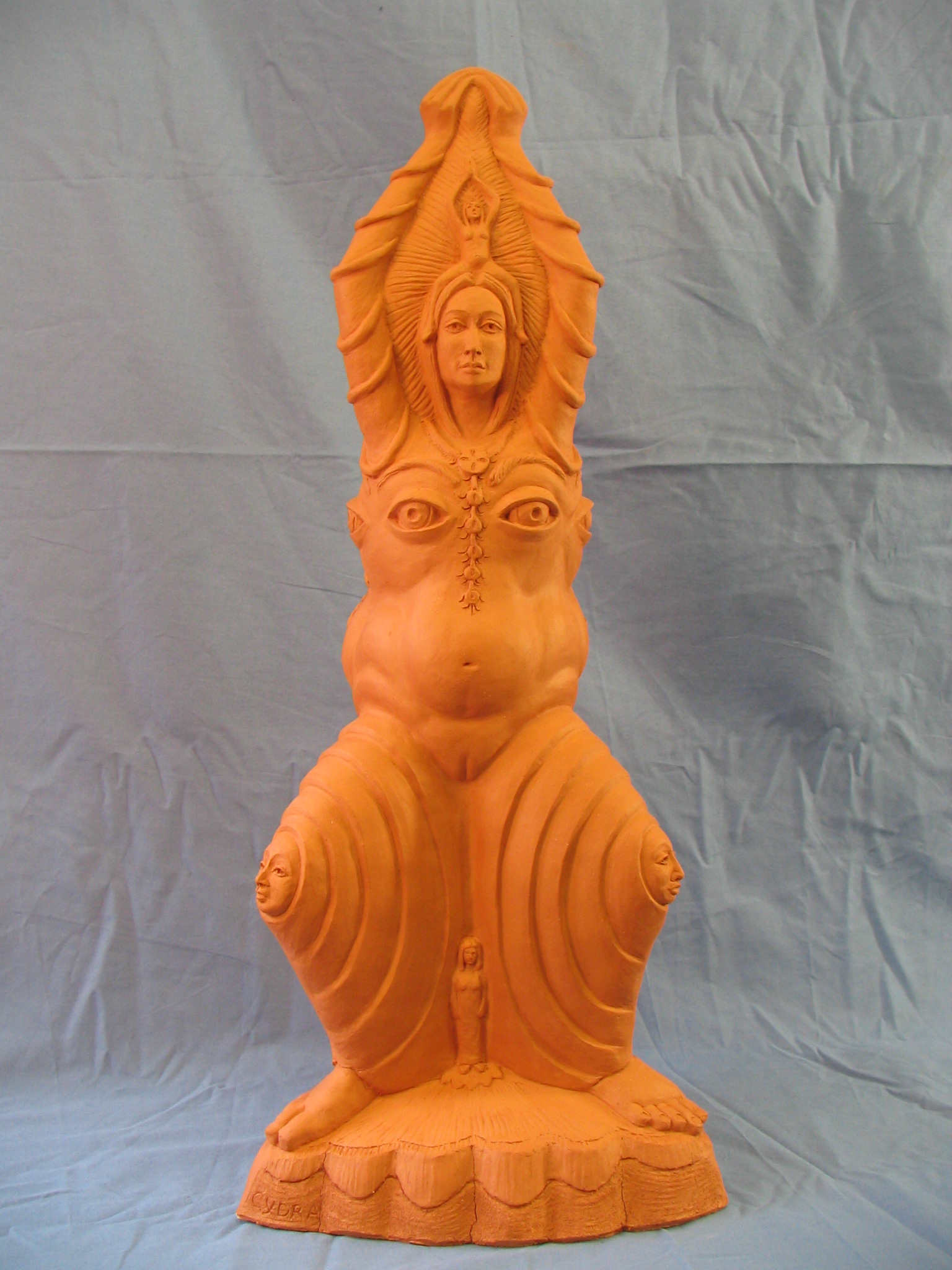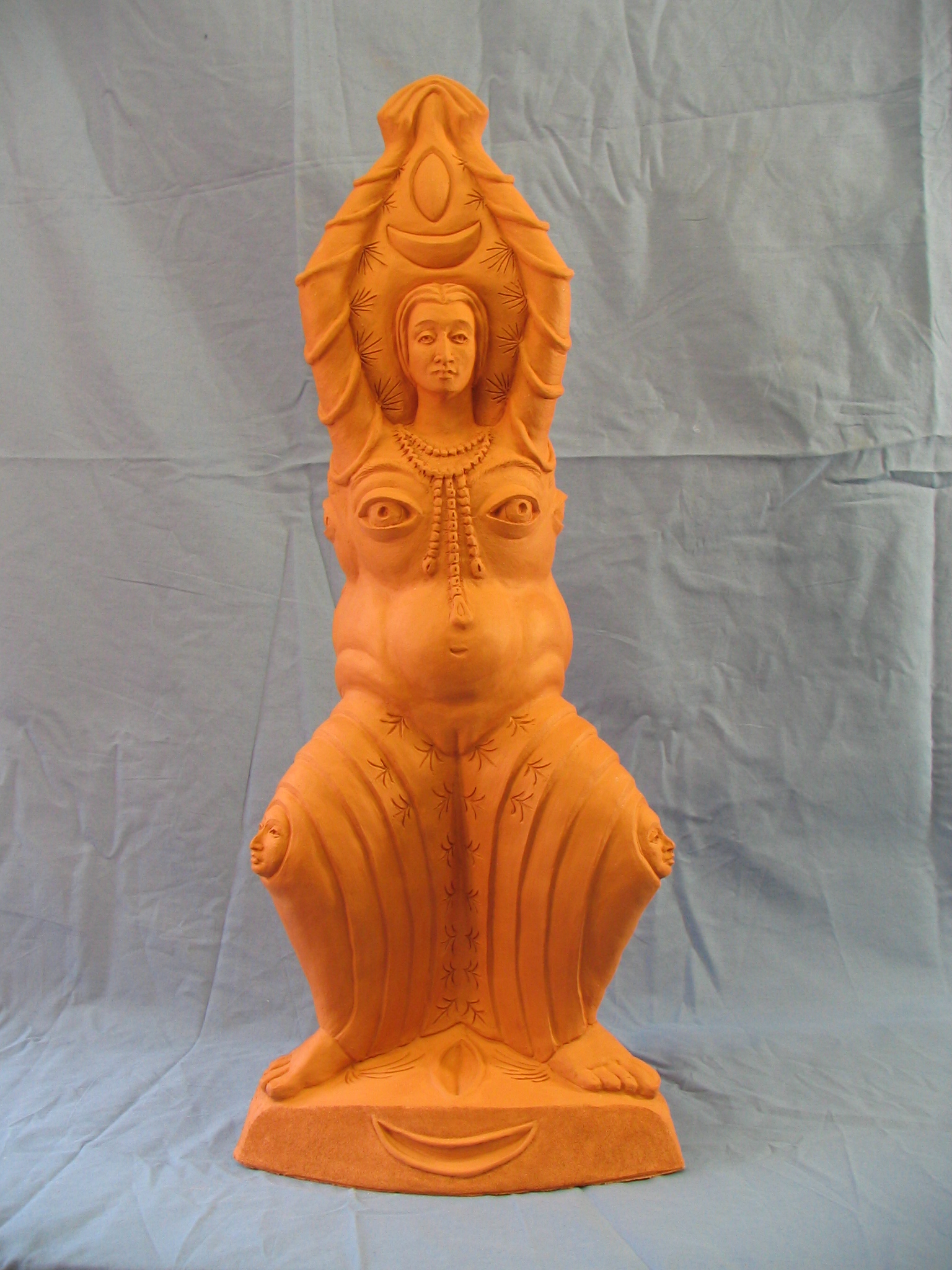
|
|
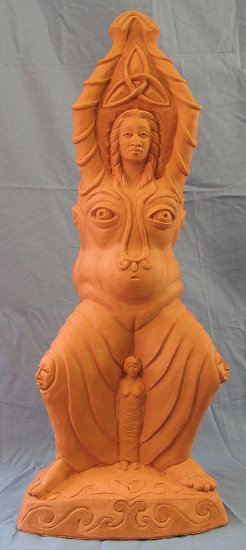
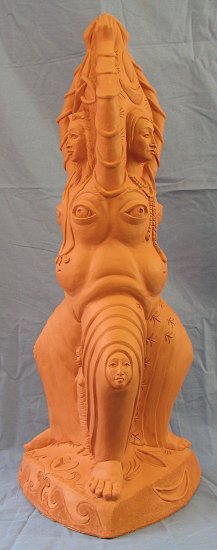 |
When I started Pope Joan with Miter Hats, Ganesh and Boubo I had a very different sculpture in mind from the one that I ended up making. One morning, as I was stretching my arms over my head, I noticed that my arms formed the shape of the Pope’s miter hat. From this, I decided that my next sculpture would be a direct evolution from my latest piece, Four Pope Joans. This new sculpture would depict 3 women standing back to back with their arms stretched over their heads to create mandorlas, or miter hat shapes. I would call this piece Three Popes. The figures would be dressed in regular clothing, as opposed to clerical garb; the idea being that the sacred can reside in the ordinary person. Each one of us is able to tune into the divine and claim our own sacred nature. As Joan of Arc reminds us, we have the capacity to directly relate to the divine without an intermediary; we are an embodiment of the divine. As I started to rough this piece together, my mind had a clear picture of how the finished piece would look. It would be a straightforward portrait of three women in plain clothing standing back to back with their arms stretched over their heads to create miter hat, or yoni shapes. Only the title, Three Popes, would unlock the meaning of the piece. However, as I started to sculpt, my fingers took a dissimilar path. It was as if the spirit of Mother India, Boubo, and Ganesh were washing over me, and soon there were faces at knee joints, and eyes where breasts should have been. It was very exciting to feel almost possessed by these unanticipated spirits. I was exploring an exotic country without a map and discovering new places. In addition, this piece marked a mile stone for me. For perhaps the first time I felt as if I was in “the zone”. I just could not sculpt fast enough. Decisions came easier and interesting choices presented themselves with not as much effort as I have had to expend in the past. It seemed as if the years of struggling were finally beginning to pay off. Also, I didn’t worry about making a realistic sculpture, but rather, a sculpture with interesting forms that repeated themselves and had a variety of colors, depth and texture. For instance, the bands on the arms of the women can be seen as bracelets, or folds of fabric, but their main purpose is that they add interest and repeat the folds in the skirts. Currently, Pope Joan’s history is controversial, with some regarding her as a myth and others as a documented historical figure. I have chosen to side step this debate, realizing that Pope Joan’s life holds truths and lessons in both its historical and mythical accounts. The fact that she is such a strong myth may speak to our desire for a female Pope. I am not illustrating history. Rather, I am giving voice to our desire for the balanced male and female in our lives. Judy Chicago (1996) details Pope Joan’s life in The Dinner Party: “A brilliant scholar, Joan disguised herself as a monk in order to study in Athens, where she obtained a degree in philosophy. She then went to Rome, where Pope Leo IV made her a cardinal; upon his death in 853, she was elected pope by her fellow cardinals. After two years, four months, and eight days as pope, she was discovered to be a woman when she gave birth to a baby, whereupon she and the child were stoned to death. She remained recognized as a pope until 1601, when Pope Clement VIII officially declared her to be mythical.” (p. 75) The bawdy Belly Goddess, Baubo, amusingly described in Clarissa Pinkola Estes book Women Who Run With the Wolves made an unanticipated appearance in this piece. I had read Ms. Estes descriptions of her years ago, and Baubo is so personally detailed in Estes book that she took up residence in my heart, waiting her turn to be revealed in my art. So, in true Baubo fashion, she just seemed to appear in this piece with out any preconceived notion. She had been nestled in the recesses of my being waiting to jump out, trickster fashion. Another serendipitous discovery was that Ganesh made an appearance in this piece. As I was working on the three female figures it became apparent that the skirts in between the figures looked like the elephant trunk of Ganesh. I then worked to accentuate these elephant-like forms. That Ganesh makes an appearance in this piece is significant to me because he is known as the remover of obstacles. Planning my trip to India was an exercise to creatively use every resource available to me to move through, around and over seemingly impossible obstacles to make my trip a reality. Also, I am a breast cancer survivor, and I had to move around many obstacles to reclaim my health and life. The differences in scale between the larger figures in this sculpture and the smaller figures reminds me of how the Egyptian sculptors at Abu Simbel used proportion to make their monolithic figures appear even more imposing by adding smaller figures along side of them. The proportional relationships in this sculpture also reminded of my trip to Petra, in Jordon. I have treasured photographs of me standing beside colossal architectural wonders; my small size making them appear even grander. I am indebted to an anonymous artist who carved an intricate sculpture of Saraswanti that I paid only twenty-eight dollars for in a local Indian shop. If I had made such a beautiful piece, I would have expected much more for it. The piece is carved from wood and the artist used the sharp blade of a knife to inscribe detailed designs into the surface. Also, the face is very intricate and expressive. I was inspired by this small piece that is only ten inches high and it motivated me to carve designs into my piece, and also inspired the topography of the faces in this sculpture. As with other pieces of my artwork, I have incorporated the mandorla (almond, or yoni) shape into this piece, exploring the different layers of meaning this elastic symbol encompasses. The simple shape of the mandorla allows it to be infused with multiple meanings and it can be found throughout this sculpture in the flaming chalice (a symbol used by Unitarian Universalists), the triquetra, the miter hat, among other forms. Exploring the similarities and relationships between symbols used in different cultures finds its place in many of my pieces. Likewise, the symbols in this sculpture take on new meanings and layers due to their new relationships to one another. This international and multi cultural potpourri with signifiers from the Pope, Indian and Greek deities, and symbols like the triquetra and the chalice and flame (from the Unitarian Universalist tradition) are formed together to create a multicultural and a multi meaning piece.
For questions or comments about Cydra's art, please email: womansculpture@icloud.com |

